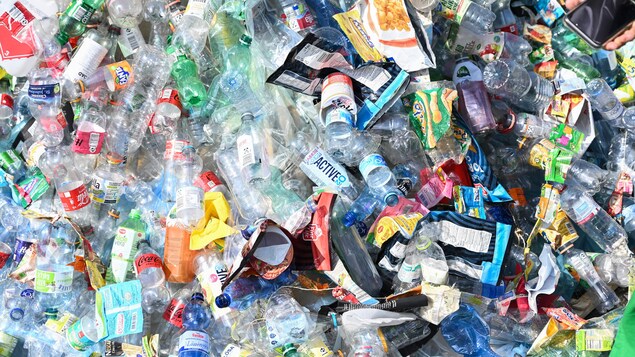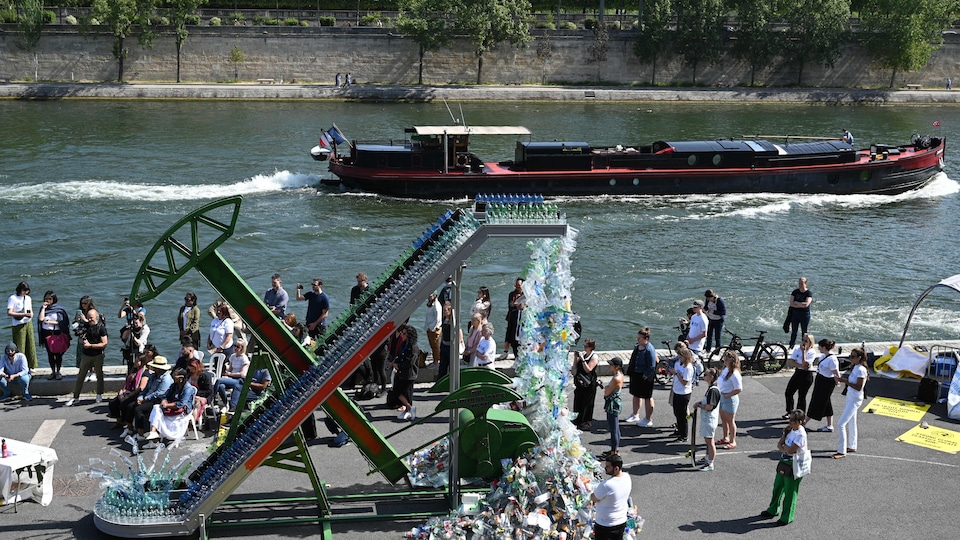the Seventh continent
the plastic spiral
there Plastic soup
or even Plastic islands
are terms used by researchers and the media to describe the plastic waste that accumulates in ocean banks.
However, these amounts of trash, visible in all of the world’s oceans, hide a much worse reality.
Most plastic waste ends up in the water column and on the ocean floor, so only 15% ends up on the surface. So it’s kind of an iceberg, it’s an image, but it really is
explained Julien Barbier, President of the Intergovernmental Oceanographic CommissionUNESCOduring a press conference in Paris on Wednesday.
This conference was held in anticipation of the second session of the Intergovernmental Negotiating Committee on Plastic Pollution, which will bring together in Paris, starting Monday, representatives from some 160 countries and nearly 850 members of civil society.
The aim of this summit series is for countries to agree on this An ambitious and legally binding new international agreement on plastic pollution
.
Every year, about 8.8 million tons of plastic ends up in the oceans. The United Nations Secretary-General, António Guterres, recently noted that it is equivalent to, every minute, Garbage truck full of plastic in the ocean
.
70% of the waste produced globally is plastic and about 10% of this waste ends up in the ocean
Julien Barbier confirmed.
Chairman of the Intergovernmental Oceanographic Commission ofUNESCO He explained that one of the objectives of the summit to be held in Paris is development risk assessment framework
This will allow countries to better understand the impact of this marine litter on animals and people.
We are more and more aware that these plastic pollutants are vectors for the synthesis of other pollutants and can transport these pollutants in various organisms, including animals.
. Hence, these pollutants end up in the food chain.
Fund more research
according to’UNESCOScientific information on the extent of the health risks and environmental impact of microplastics in fresh and salt water is limited, hence the importance of more research funding.
We have to do a preliminary risk assessment in many regions of the world in the coming years, and we obviously need investments and financing for that. This is also one of our important messages, that is, in the course of these negotiations that will take place next week, we must not forget about science
Julien Barbier explained.
Fanny Duffer, Head of the World Heritage Marine ProgrammeUNESCOadded that It is a global problem that needs a global solution
And That the Member States must put in place concrete policies and concrete laws, which will be the same everywhere, and research is essential in all of this
.
She indicated that a A large part of the negotiations aims to reach concrete political tools
to reduce at source
.
” The danger is that the treaty remains too vague and leaves room for interpretation [des différents pays]. »
Many different types of plastic
One of the difficulties that researchers face when studying the consequences of plastics in fresh water and in the oceans is the sheer number of types of material that need to be analysed.
Car tires and synthetic textiles that come from washing clothes, packaging, bottles, and fishing gear are just a few examples of the many different products that break down into smaller and smaller pieces and form microplastic particles.
The composition of these particles can vary greatly: they can contain various chemical additives or dyes, so their impact on health and on environmental systems is different as well, hence the importance of legislation in the industries that manufacture these products, d encourage a circular economy and enterprise policies that will promote behavioral change, according to researchers fromUNESCO.
negotiations in Canada
Representatives of the countries that will meet in Paris will try Finding ways to encourage the sustainable production and consumption of plastic, from product design to environmentally sound management of waste, using resource efficiency and circular economy approaches
According to the United Nations Environment Program, which invited countries to this summit.
In a statement, the United Nations Environment Program He asserts that if the status quo is maintained, plastic pollution in the oceans could triple by 2040 and reach 29 million tons per year.
The session of the Intergovernmental Negotiating Committee on Plastic Pollution to open in Paris is the second of five.
Negotiations are expected to continue in Kenya in the fall, in April 2024 in Canada, and then in Korea in the fall of 2024.

“Total coffee aficionado. Travel buff. Music ninja. Bacon nerd. Beeraholic.”







More Stories
Fluoroscopy | “Self-coup”?
This is why you find it difficult to wake up in the morning.
She meets her boss at the airport after taking sick leave.